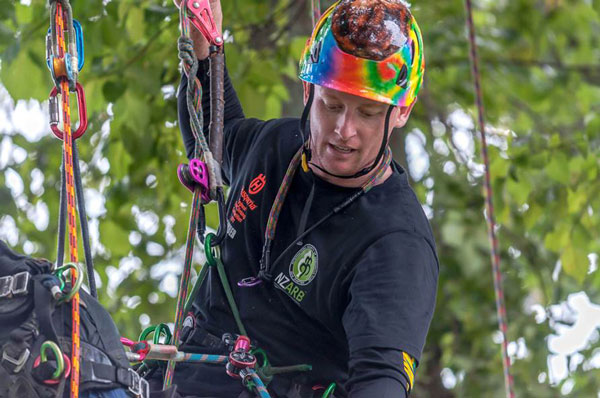A technical question arose at the recent Wellington Regional TCC, leaving the Petzl Zillon and ART Positioner work positioning lanyards owners a little perplexed.
The Aerial Rescue team had 'Woody' comatose in his climbing system, hanging in free space about 4m off the deck.
Most climbers accessed the tree and installed a re-direct above and to the right of Woody, allowing closer proximity to execute the rescue. Even with the re-direct placed optimally, the rescuer was still at least 1 m away from the patient, just slightly out of reach of the friction hitch.
To make contact with Woody, the rescuer invariably used their work positioning lanyard attached via a single-leg to pull Woody in closer before lowering him to the ground on his system.
All very simple you say. And that's true.
Except for the climbers using the Petzl Zillon and the ART Positioner work positioning lanyards.
The Aerial Rescue judges on-the-day decided both these work positioning lanyards adjusters were not employed correctly, in that they were not 'certified' for use in single-leg mode. Climbers using the Trango Cinch Lanyard or a traditional hitch based system were exempt from this ruling.
So the question is; can the Petzl Zillon and the ART Positioner work positioning lanyard adjusters be used in the single-leg mode to assist an aerial rescue in this manner?
The simple answer is 'yes'
The answer is 'yes' apparently. With reservations - see Petzl notice here. Understandably the Wellington AR judges were simply erring on the side of caution.
The Petzl Zillon is CE marked with the EN 358 certification, and the ART Positioner reaches both EN 358 and EN 367 Standards.
The Petzl Zillon and ART Positioner work positioning lanyard adjusters operate fluidly in double-mode, their primary application.
But one criterion for the EN 358 Standard is the single-mode test, in particular, the test under a 5 kN load: load held for 3 minutes with slippage less than 50 mm (Clause 5.2.3 in EN 358:2000).
Therefore, technically speaking the Petzl Zillon and the ART Positioner DOES REACH the standard for the single-leg mode and would, therefore, be suitable for horizontal use in the Wellington aerial rescue situation.
However, it can get complicated in single-leg mode, especially when using the device in a VERTICAL application.
When employed vertically, both the Zillon and Positioner have a tendency to release rather abruptly. In this situation, inexperienced climbers might clench the release mechanisms open, applying a 'death grip', falling the entire length of the lanyard, risking contact with obstacles on the way down.
Anchoring of the single-leg also introduces potential hazards - see Petzl notice on the subject here.
Ideally, the introduction of a suitable stopper knot behind the adjuster, once the patient was secured would ensure 'Best Practice' if one wanted to be technically correct before lowering.
Treetools is not sure what the ITCC Rules Committee make of this situation, but that is our take on using the Petzl Zillon and ART Positioner adjusters in a single-leg mode for aerial rescue.
Visiting Australian climber Jamie Boston using the ART Positioner lanyard adjuster in the 2017 NZ Arb Husqvarna Wellington Regional TCC Aerial Rescue, Palmerston North, on Saturday 11 March to move Woody into a better position before lowering.

